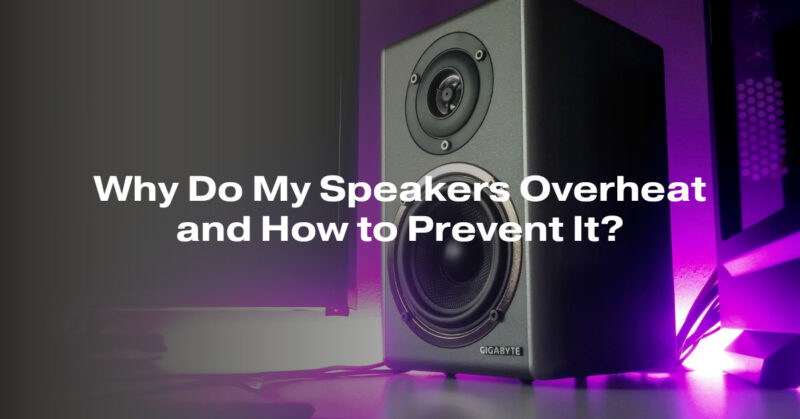Speaker overheating can be a concerning issue, as it not only affects sound quality but can also lead to long-term damage. Understanding the causes of speaker overheating and knowing how to prevent it is essential for preserving the performance and longevity of your audio equipment. In this comprehensive guide, we’ll explore the common reasons behind speaker overheating and provide practical solutions to ensure your speakers stay cool and perform optimally.
Table of Contents:
- Understanding Speaker Overheating
- Defining speaker overheating and its implications for audio equipment.
- Recognizing the signs of overheating in speakers.
- The importance of addressing overheating issues promptly.
- Causes of Speaker Overheating
- Identifying common factors that contribute to speaker overheating.
- Amplifier-related causes, including clipping and overdriving.
- Overworking speakers with high volumes or excessive power.
- Ventilation and Cooling
- The role of proper ventilation in maintaining speaker temperature.
- Ensuring adequate airflow around speakers to dissipate heat.
- Ventilation considerations for various speaker types and applications.
- Amplifier Matching
- The importance of matching amplifiers to speaker specifications.
- Avoiding underpowered or overpowered amplifier-speaker combinations.
- How impedance mismatches can lead to overheating.
- Clipping and Distortion
- Understanding the impact of amplifier clipping on speaker performance.
- Recognizing distortion as a sign of potential overheating.
- Preventing clipping through proper amplifier settings and volume control.
- Speaker Placement and Room Acoustics
- The influence of speaker placement on overheating.
- Strategies for optimizing speaker placement to minimize heat buildup.
- Room acoustics and their role in speaker temperature control.
- Subwoofer Overheating
- Common causes of subwoofer overheating.
- Solutions for addressing subwoofer overheating in home and car audio systems.
- The importance of subwoofer enclosure design and ventilation.
- Environmental Considerations
- Evaluating the impact of temperature and humidity on speaker overheating.
- Protecting outdoor and marine speakers from environmental stressors.
- Seasonal adjustments and climate-specific precautions.
- Regular Maintenance
- Establishing a routine maintenance schedule for speakers.
- Cleaning speaker components to remove dust and debris.
- Inspecting and addressing loose connections or damaged components.
- Amplifier Cooling Solutions
- Exploring amplifier cooling options, including fans and heatsinks.
- Adding external cooling solutions for amplifiers in high-demand setups.
- The benefits of temperature-controlled amplifier fans.
- Professional Evaluation
- When to seek professional assistance for persistent overheating problems.
- Working with audio technicians or repair experts to diagnose and address complex issues.
- Preventing overheating through professional audio system calibration.
- Conclusion
- Summarizing the common causes and practical solutions for speaker overheating.
- Empowering audio enthusiasts to identify and prevent overheating issues effectively.
- Ensuring speakers remain cool, perform optimally, and have a longer lifespan in your audio system.
By the end of this guide, you’ll have a comprehensive understanding of why speakers overheat and the practical steps needed to prevent overheating effectively. Whether you’re managing a home audio system, a car audio setup, or professional sound equipment, addressing overheating issues will help you preserve sound quality and the longevity of your speakers.

